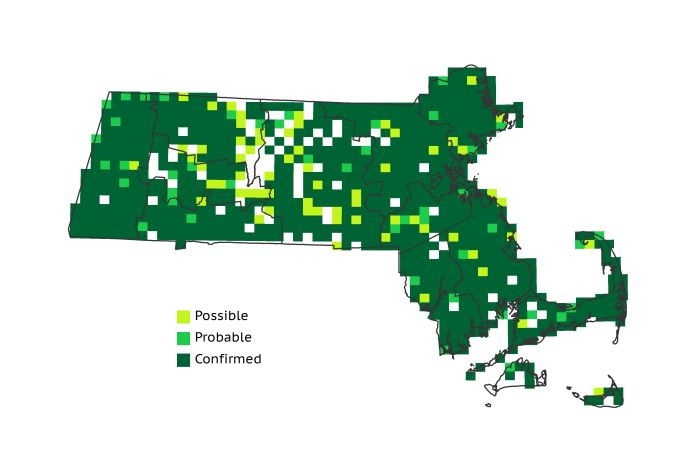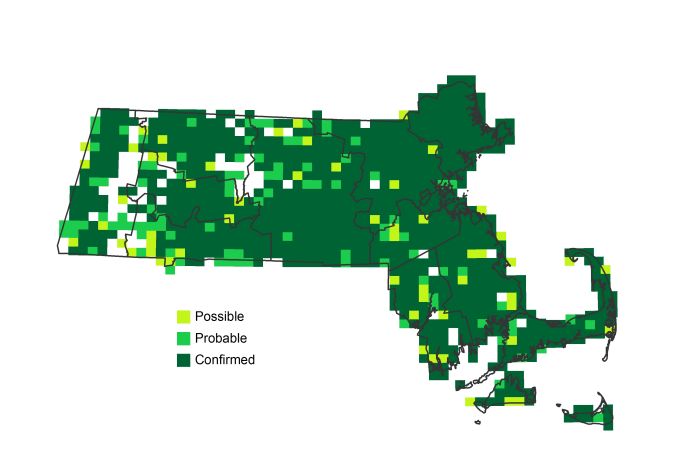Find a Bird
House Sparrow
Passer domesticus

Nearly ubiquitous and likely declining
“The House Sparrow has been introduced into many countries, and wherever it has appeared it has been stigmatized as injurious, pernicious, disreputable, salacious, quarrelsome and even murderous. It has been branded a thief, wretch, feathered rat etc. etc., but whatever may be said about it, the bird certainly is important.” – Edward Howe Forbush, Birds of Massachusetts and Other New England States
Ten thousand years ago, according to fossil evidence, the House Sparrow could be found living in what is now Israel. It is entirely possible that this species has actually lived alongside humanity in farms and homes since the rise of agriculture in the Fertile Crescent all those millennia ago. Variously praised for its humility, dismissed for its vulgarity, adored for its cuteness, and reviled for its pest habits, there can be no doubt that humankind has long ascribed special providence to the House Sparrow. In most places in Massachusetts today, one can hardly step outside without encountering the species somewhere nearby.
Historic Status
The House (or English) Sparrow, while not a “real” sparrow but rather an Old World Sparrow, was initially introduced in Brooklyn, New York, in 1851 and 1852; Portland, Maine, in 1854; and Peacedale, Rhode Island, and Boston in 1858. Over the next several decades, more than a hundred introductions were made around the United States, ostensibly to fight worms and caterpillars that were defoliating trees in city parks. Once the birds became an epidemic unto themselves, the tables turned. “Later many attempts were made at various times and in many places to exterminate the Sparrows, but without success,” wrote Edward Howe Forbush in 1929. The House Sparrow eventually spread out of major cities and gradually moved into the countryside, unfortunately displacing numerous native cavity-nesting species along the way. “Purple Martins and Cliff Swallows,” Forbush continued, “have never reappeared in their former numbers” (Forbush 1929).
Atlas 1 Distribution
House Sparrows could be found in Atlas 1 wherever humanity’s influence on the landscape was obviously felt, whether in the bustling city or at the bucolic farmstead, and that was in about 88% of the blocks in the state. In the Berkshires, the blocks where House Sparrows were not found were likely only in areas of deep forest with few openings and no human habitation. The same was probably true in the Worcester Plateau regions, though the species’ presence may also have been underreported in that region due to uneven survey effort. The easternmost regions were a haven for House Sparrows, particularly as more areas of forest and wetland were converted to suburban developments. House Sparrows were even present and well established on most of the larger offshore islands.
Atlas 2 Distribution and Change
Interestingly, the range of the House Sparrow unexpectedly declined in Massachusetts during the Atlas interval, and the drivers for this decline are likely complex. House Sparrows continued to occupy about 88% of the blocks surveyed, although they exhibited a pattern of geographically centralized losses. The Berkshire Highlands and Lower Berkshire Hills have lost House Sparrows from more than 30% of the blocks in each region, and concurrently show almost no new blocks occupied. Most other regions show losses offset by gains or close to a net of 0 blocks lost.
Atlas 1 Map

Atlas 2 Map

Atlas Change Map

Ecoregion Data
Atlas 1 | Atlas 2 | Change | ||||||
Ecoregion | # Blocks | % Blocks | % of Range | # Blocks | % Blocks | % of Range | Change in # Blocks | Change in % Blocks |
Taconic Mountains | 16 | 100.0 | 1.9 | 14 | 56.0 | 1.5 | -3 | -20.0 |
Marble Valleys/Housatonic Valley | 39 | 100.0 | 4.6 | 39 | 100.0 | 4.3 | 0 | 0.0 |
Berkshire Highlands | 52 | 94.5 | 6.1 | 32 | 58.2 | 3.5 | -20 | -37.7 |
Lower Berkshire Hills | 26 | 92.9 | 3.1 | 17 | 54.8 | 1.9 | -10 | -37.0 |
Vermont Piedmont | 16 | 94.1 | 1.9 | 17 | 100.0 | 1.9 | 0 | 0.0 |
Berkshire Transition | 32 | 84.2 | 3.8 | 33 | 82.5 | 3.6 | 0 | 0.0 |
Connecticut River Valley | 54 | 96.4 | 6.4 | 63 | 96.9 | 6.9 | 1 | 2.1 |
Worcester Plateau | 58 | 74.4 | 6.8 | 70 | 79.5 | 7.7 | -1 | -2.1 |
Lower Worcester Plateau | 56 | 75.7 | 6.6 | 70 | 87.5 | 7.7 | 4 | 7.4 |
S. New England Coastal Plains and Hills | 254 | 94.1 | 29.9 | 277 | 97.9 | 30.5 | 4 | 1.8 |
Boston Basin | 52 | 92.9 | 6.1 | 55 | 98.2 | 6.1 | 3 | 5.5 |
Bristol and Narragansett Lowlands | 99 | 93.4 | 11.7 | 107 | 93.9 | 11.8 | 0 | 0.0 |
Cape Cod and Islands | 95 | 69.9 | 11.2 | 113 | 78.5 | 12.5 | 12 | 10.0 |
Statewide Total | 849 | 87.6 | 100.0 | 907 | 87.5 | 100.0 | -10 | -1.2 |
Notes
In accordance with Atlas declines,the House Sparrow shows a significant decreasing Breeding Bird Survey trend in Massachusetts, in the New England/Mid-Atlantic Region, and in the Eastern US overall. Changes in footprint and abundance for this species have been noted in Britain and Ireland in their Breeding Bird Atlas 2. The House Sparrow is a native species in Europe, and as such this major decline has attracted much more attention there than it has in the US, where it is an introduced species. In Britain, the loss of the House Sparrow has gone hand-in-hand with the loss of other species that are dependent upon farmland.



